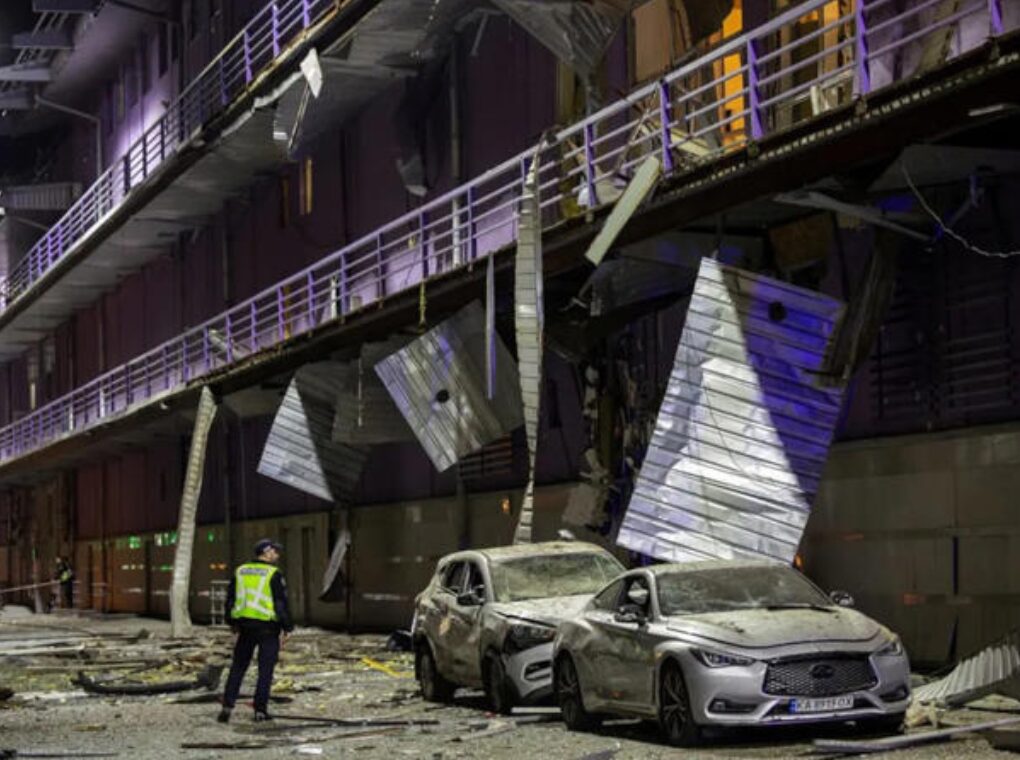In one of its most aggressive air campaigns yet, Russia launched a large-scale aerial assault across Ukraine between June 9 and 10, damaging a facility in Kyiv used by Boeing’s engineering and technical teams. While no casualties were reported among staff, the strike on a U.S.-linked defense contractor is heightening concerns in Washington over Moscow’s expanding war strategy.
According to Reuters and the Financial Times, the airstrike was part of a coordinated Russian offensive involving over 315 drones, ballistic and cruise missiles. The attack hit multiple Ukrainian cities, including Odesa and Kyiv, causing both civilian and infrastructure damage.
No Staff Harmed, But Message Clear
Though Boeing confirmed none of its personnel were injured and its operations remain intact, Ukrainian officials believe the attack was anything but random.
“This wasn’t just about military targets — it was symbolic,” said a senior Ukrainian defense official. “Targeting Boeing, a U.S. aerospace giant, sends a message far beyond our borders.”
Boeing, which has operated in Ukraine for years and employs over 1,000 local staff, did not specify if it believed it was intentionally targeted. Still, the facility’s prominence and the company’s growing defense ties with Ukraine suggest deliberate intent.
U.S. Corporate Interests Now in Crosshairs?
The Kyiv strike appears to mark a significant escalation in Russia’s wartime targeting. While industrial and energy infrastructure has long been a focus, the hit on Boeing could signal a new dimension: targeting U.S.-linked corporations aiding Ukraine’s war effort.
“This could be the start of a broader Russian campaign aimed at disrupting foreign technical and logistical support for Ukraine,” said a Western intelligence analyst. “Companies with defense or dual-use capabilities are especially vulnerable.”
The Boeing facility reportedly works closely with Ukrainian aircraft manufacturer Antonov, and recently expanded its cooperation on defense-related projects, including drone systems and logistics infrastructure.
A New Phase of Escalation
The broader air campaign saw missiles and drones strike across Ukrainian territory, including tragic hits on civilian areas — among them, a maternity hospital in Odesa. Officials described the attack as one of the most intense barrages since the start of the full-scale invasion in 2022.
Ukraine’s Foreign Minister, Andriy Sybiha, called the Boeing strike “a chilling example of Putin’s disregard for peace efforts,” urging the U.S. to deepen security and defense cooperation.
Growing Risks for Foreign Businesses
The Boeing incident highlights the growing risks for international firms operating in Ukraine. According to the American Chamber of Commerce in Ukraine, nearly half of its 700 member companies have experienced direct damage from Russian attacks since 2022.
“Thirty-two percent of our members have lost staff due to the war,” said Andy Hunder, ACC president. “This attack reminds us that the lines between business and battlefield are blurring.”
In previous incidents, Russia has also struck or occupied U.S.-owned assets, including a Coca-Cola plant and Cargill facilities, further fueling fears that Western business infrastructure is now fair game.
Washington on Alert
The strike is likely to test the U.S. response, especially as President Donald Trump navigates mounting pressure over his administration’s Ukraine policy. While Trump has publicly criticized Russian aggression, his stance on deeper involvement remains ambiguous.
“This was more than just a hit on a building,” said a NATO diplomat. “It was a strategic warning shot aimed directly at the United States.”
What’s Next?
Boeing has not publicly altered its Ukraine operations. It recently posted job openings in the country, signaling resilience in the face of rising threat levels. However, the attack could catalyze further defense commitments and heighten coordination between Western firms and national governments.
With peace talks stalled and no sign of de-escalation, the war’s next phase may increasingly involve civilian-adjacent targets and strategic pressure on international actors.
As one Ukrainian official put it:
“The battlefield is expanding—not just across our skies, but into the heart of Western cooperation.”
